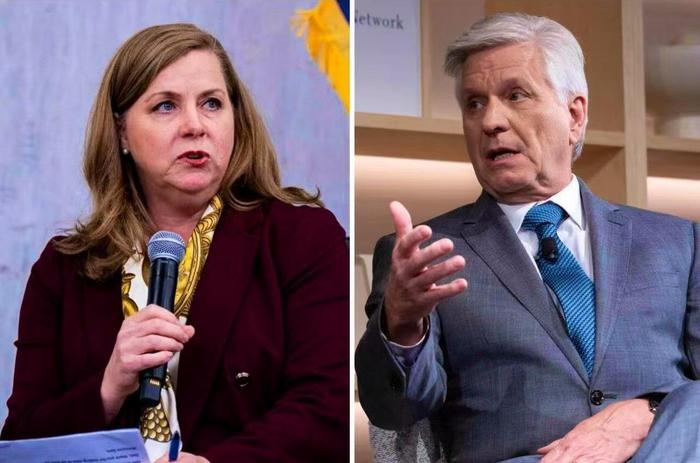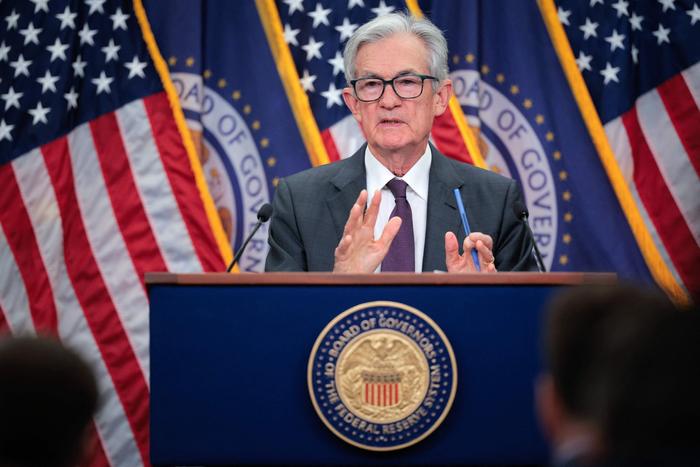

On July 30th, local time, the Federal Reserve announced after a two-day monetary policy meeting that it would maintain the federal funds rate target range at 4.25% to 4.50% unchanged, marking the fifth time since early 2025 that the Fed has decided to keep interest rates steady.
Despite facing increasing pressure from the White House to cut interest rates, the Fed opted for policy stability. However, this meeting was notable for the rare occurrence of two members voting against the decision, reflecting an intensifying division within the Fed over interest rate policies.
The Fed’s Stability on Interest Rates: Emphasizing Economic Uncertainty
On the same day, the Fed stated in its policy statement that the U.S. economy had “slowed down” in the first half of the year. If this trend continues, it could provide grounds for future rate cuts. However, it also emphasized that “economic uncertainty remains high,” with both inflation and employment targets facing risks.
Fed Chairman Jerome Powell mentioned during a press conference that the current monetary policy stance gives the Fed a favorable position to respond promptly to potential economic developments. He stated:
The Fed has not made any decisions regarding interest rates for September yet. Future policy adjustments will depend on “all the evidence,” including employment, inflation, and economic activity data.
Powell specifically mentioned that tariff policies have driven up the prices of certain goods, with about 30% to 40% of core inflation potentially coming from tariffs. This stance suggests that the Fed is still weighing the long-term impact of tariffs on inflation, which may be one of the key factors behind its decision to delay rate cuts.
Trump’s Pressure Falls on Deaf Ears as Fed Disputes Emerge Rarely
Recently, President Trump has repeatedly called for significant interest rate cuts from the Fed, even threatening to fire Powell and criticizing the Fed for “lacking action courage.” Early on July 30th, Trump once again urged the Fed to cut rates, stating that maintaining high interest rates is hurting people. In response, Powell did not make a comment that day.
△Michelle Bowman (left); Christopher Waller (right)
The Federal Reserve’s decision seems to indicate that political pressure has not altered its policy path. However,
two members appointed by Trump—the Vice Chair responsible for regulation, Michelle Bowman, and the Director, Christopher Waller—
support an immediate 25 basis point cut in interest rates.
This marks the first time since 1993 that two Fed officials have simultaneously opposed a rate decision.
Powell revealed that Waller and Bowman will explain their reasons for voting against the decision in the coming days. Analysts believe their opposition could be due to concerns about a weak labor market. Waller warned of a near-stalled job growth if credit conditions are not relaxed or if layoffs occur; Bowman was worried that a delay in rate cuts would exacerbate recession risks. Their positions partially align with the Fed’s desire for rate cuts, but most Fed officials remain cautious, especially concerned about the potential impact of tariffs on inflation.
Powell Avoids Questions About Retention, Potential Tensions with White House May Worsen
At a press conference, Powell declined to comment on whether he would continue serving as a Fed director after his term ends in May 2026, only stating that
his statement was interpreted by the market as a sign of strained relations between the Fed and the White House. Treasury Secretary Steven Mnuchin had previously hinted that Powell should leave the Fed completely after his term ends to avoid “policy chaos.” Powell’s silence may further heighten market concerns about the Fed’s independence, especially amidst Trump’s ongoing pressure.
September Rate Cut Expectations Fluctuate, Investors Wait for Key Signals
Despite the Fed’s July decision to keep interest rates unchanged aligning with market expectations, the policy statement and Powell’s cautious stance led to a significant cooling of bets on a September rate cut.
According to the latest data from the “Fed Watch” at the Chicago Mercantile Exchange, the probability of a 25 basis point rate cut in September has plummeted from 68% before the meeting to 45%, while the probability of keeping rates unchanged rose to 55%.
It is noteworthy that although the expectation for a rate cut has significantly decreased, the U.S. stock market has responded relatively restrainedly. The three major stock indices of the New York Stock Exchange experienced mixed gains and losses on the 30th, without showing signs of panic selling, reflecting the resilience of investor sentiment, which may still be waiting for more confirmation signals.
Overall, the Fed’s decision to remain silent this time reflects its cautious consideration of economic uncertainty and exposes internal policy disagreements. Trump’s ongoing pressure has made the policy outlook even more ambiguous. Whether there will be a rate cut in September? How will Powell’s relationship with the White House evolve? These uncertainties will continue to keep the market nervous.